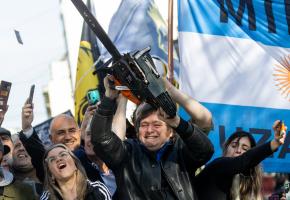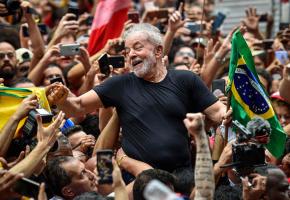Between meetings we sped through Tumaco’s crowded, noisy, hectic streets in a bright yellow taxi catching fragments of the day’s news on the radio. We gathered that the final part of the long-awaited peace agreement between the Colombian government and the FARC would be signed that night. The reports on the radio were punctuated by the sound of grenades being detonated by the Colombian army in a series of military exercises being carried out in a tract of wasteland bordered by the Pacific Ocean. On 24 August, the night, the final part of the peace agreement was signed and celebrated in the main cities across Colombia, Tumaco stood still, with the constant pulse not of cumbia but of Blackhawk helicopters circling overhead. Everyone in Tumaco had begun nervously asking the same question: what would peace mean for them?
We were in Tumaco with the International Caravana of Jurists to Colombia, to meet with local grassroots organisations, victims’ movements, Afro-Colombian communities, and members of the Awá indigenous people, religious leaders, and local authorities, among others.
Abandoned by government
Tumaco, is a small city located in Colombia’s south-western corner, on the Pacific Ocean. Approximately 95 percent of Tumaqueños are Afro-Colombian, while the other five percent is composed of mestizos and the indigenous Awá people. According to locals, until 20 years ago, Tumaco didn’t feature on the map of Colombia and the level of state abandonment is immediately evident in the rundown infrastructure, haphazard building construction, the dire state of social services and extreme levels of unemployment and poverty.
The surrounding Andean mountains and the coastal flood plains of the Nariño department are where the vast majority of Colombia’s coca leaves are cultivated, harvested and processed, to be later trafficked northwards along the Pacific Ocean to Mexico, from where the final product eventually enters the ever-demanding illegal drugs market in the United States.
Since the signing of the bilateral cease-fire agreement between the Colombian government and the FARC on 23 June 2016, violence in Tumaco has reached alarming levels with one official source quoting a figure of 60 deaths over a six-week period.[3] The gun battles being fought on the streets of the city have fuelled a tangible sense of fear, which was particularly noticeable during a meeting held with members of the Tumaco Victims Movement. Those present were victims of forced displacement on multiple occasions or had lost family members during the conflict, and were often threatened when they took a stand and sought justice for these human rights violations.
Most of the women with whom we met, or their young daughters, had been victims of sexual violence. As night fell, these Tumaqueños, who have fought so tirelessly for social change and who come from the poorest, most forgotten sectors of Colombian society, hurried home on moto-taxis so as not to be caught out on the streets after dark.
 Army blackhawks at the civilian airport
Army blackhawks at the civilian airport
There was, after all, an unofficial curfew in place, as ordered by one of the non-state armed groups operating in Tumaco, and anyone found stepping out of line ran the risk of being threatened, attacked, raped, or killed. The National Police was highly criticised by local residents and local authorities alike, for treating the recent peak in violence as merely a drug trafficking issue, completely ignoring the broader political climate in Colombia.
The new forces of order
The declaration of a bilateral ceasefire and the imminent demobilisation of the FARC has meant that its allegedly unchallenged control of Tumaco and the surrounding areas in recent years will shortly be relinquished, and a battle has already begun to fill this void in order to gain territorial control and cash in on the lucrative cocaine market. New groups, such as the “Gente del Orden” or the “SicarIos del Pacifico”, have started announcing themselves in graffiti on city walls and by distributing pamphlets. Invisible frontiers are being defined between opposing factions as these newly emerging groups attempt to bring entire areas under their control.
The ELN has allegedly also asserted its presence in Tumaco and there are rumours that a group of FARC members, known as milicianos, operating in Tumaco have no intention of demobilising but instead will join forces with other existing groups or operate autonomously. Locals seem to believe that the ultimate peak in violence threatens to come later, when the paramilitary groups allegedly lurking on the outskirts of Tumaco, across the main bridge that links it to the mainland, endeavour to take on whichever group eventually gains control in the aftermath of the FARC’s withdrawal.
Added to this mix of newly emerging and already existing non-state armed actors is the heavy presence of the Colombian military, which is evident throughout Tumaco. The 3000-strong Jungle Battalion No. 53 patrols heavily populated civilian areas, as well as Tumaco’s port. However, far from being seen as a welcome support amid growing levels of unrest, the army, and indeed the police, were described by the local population as, at best completely useless, and at worst, highly corrupt and complicit. It was suggested that they operate in collusion with the various non-state armed actors. Indeed, it is hard to fathom how otherwise tonnes of processed coca leaves could be trafficked out of Tumaco.
In Tumaco, chapter four of the Peace Agreement, regarding illicit drugs, is being treated with a considerable amount of scepticism. The level of state abandonment is such that 70% of the local population is unemployed[4] and struggling to provide even basic subsistence for their families. The locals with whom we met seemed to agree that living even a minimally dignified life in Tumaco was almost impossible without becoming involved in some way in coca production. However, they differentiated their small-scale involvement from that of those who reap the massive financial rewards of this extremely profitable illicit drugs trade.
The price of peace
Many young men and women travel to the rural areas around Tumaco to cultivate and harvest coca leaves, while some fishermen failing to make ends meet with their fishing nets, become involved in trafficking. Some even set sail for Mexico in a bid to cash in on a one-off payment for handing over tonnes of processed coca to the powerful Sinaloa cartel. Those who manage to make it back alive after allegedly receiving the equivalent of €50,000, brandish gold chains, new motorbikes, and other signs of their newly found wealth. Many are not so lucky however, and disappear at some point along the trafficking route and their fate remains unknown. Despite the risks involved, as long as the high demand for cocaine exists from the US market, coupled with the extreme levels of poverty in Tumaco, it is difficult to imagine how any alternative could be introduced that would offer the same stable income to Tumaco’s urban and rural population. One local leader sighed when asked about the discussion on illicit drugs in the Havana peace talks and suggested that a solution would only be found in exploring legalisation. Until then, all else would ultimately fail and the consequences of that failure would be born by the local population.
 Fishermen head up the coast
Fishermen head up the coast
Despite the increased levels of violence and fear, the unofficial curfew, the growing confusion amongst the existing and newly emerging non-state armed actors, and the battle for territorial control to secure a stake in the drugs trade, one local leader exclaimed “Of course we are hopeful, if we weren’t, we wouldn’t carry on every day as we do”.
In Tumaco’s Historical Memory Centre there is a section dedicated to explaining the Peace Agreement ahead of the upcoming plebiscite. The majority of visitors have indicated that they will be voting Yes, although they are aware that this peace will ultimately come with a price. Since the ceasefire was signed at the end of June, that price has meant more bloodshed on Tumaco’s streets, a growing sense of fear, forced displacement and a spate of killings. It is expected that Tumaco’s civilian population will continue to bear the brunt of this recent wave of violence for months to come until control is clearly established by whichever new group fills the void left after the FARC has demobilised.
All photos: Niamh Ni Bhriain

















